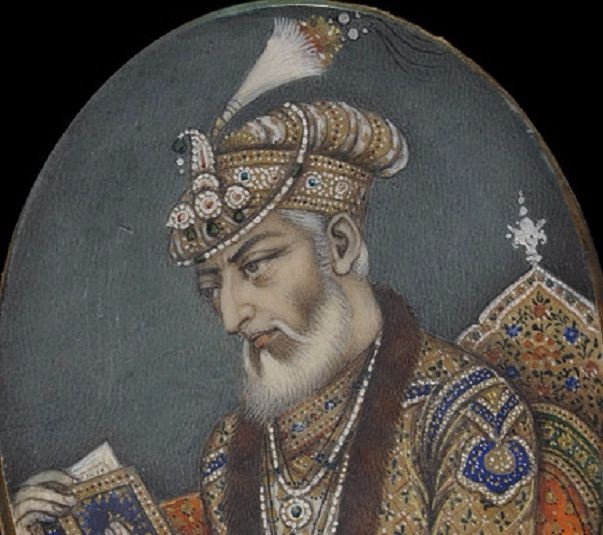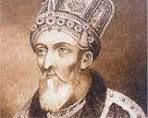PART 1:
The earliest Muslims to travel to India may have sailed from Arabia in the life time of Prophet Muhammad PBUH. For centuries, Arab traders and sailors had been familiar with ports of western India. Some of them settled there, and it seems that certain kings, whose prosperity depended on the maritime trade, encouraged their youth full subjects to become Muslims and learn navigation. The descendants of these Arabs and the converts are still found on the Coast of Malabar(A PLACE IN INDIA). However, the Muslims arrival in Indian subcontinent in great numbers started with their invasion of Sindh in AD 712 under the leadership of Muhammad Bin Qasim. The muslims followed in waves of conquest untill Delhi fell to Muslim Forces of Shahabuddin Muhammad Ghori (A KING) in 1192.
The Dehli sunltanate was Founded by Qutubuddin Aibak in 1206 and Muslim power continued to expand until it reigned supreme over the entire subcontinent. Five turkish/ Afghan dynasties ruled Delhi till 1526. The Muslim kings followed by these dynasties ruled by decrees (FARMANS). The king was the chief executive, sole legislator and the chief judge of land. The powers of executive,judiciary and legislation were concentrated in him. He administered justice to Muslims and Non Muslims subjects. The Hindus acquired the status of dhimmies (Person who, while retaining their own religion, were exempted from military services on payment of a poll tax). The Delhi kings, however preffered adherance to the principles of Islamic Law while administering justice to their subjects. Nevertheless, the unrestrained power of King and his whims and wishes were the law of the land. Each king divided its terrirtory into provinces, run by provincial governors,Magnificent and luxurious courts,rewards for obedience,suppression of dissent, pious, dispositions and instilling fear and awe in the hearts of the ruled rahter than seeking the consent of the people were the chief traits of such rulers.
The Turkish Afghan dynasties were succeeded by Mughals. Babar the first Mughal Emperor to rule the Indian Sub continent,came from a small kingdom of Turkistan. He defeated the last of the Turko Afghan Dynasties,the Lodhis, and laid the foundation of the Mughal Empire. The period of its first six emperors (1526-1707) is known for the glory and power of the Mughals. These emperors are known for laying the foundation of modern administration of India and for introduction the system of agricultural revenue administration which still prevails in India and Pakistan.
Akbar (1556-1605), subdued the entire subcontinent except the extreme south, and ruled over Afghanistan as well. He tred to unite Muslims and Hindus by adopting a policy of appeasement towards his Hindu subjects. He accepted in marriage for himself as well as for his son, women of Hindu Rajput chieftains. He prohibited the levy of taxes on Hindu pilgrims and collection of jizya, the differential tax (or protection tax), claimed for non muslims. Cow slaughter was illegal. He founded a new religion,synthesizing Muslim and Hindu faiths. This religion, however did not survive him.
For transacting the affairs of state Mughal emperors, appointed heads of various departments the imperial house hold under the Khan e Saman (Chief Chef).Military pay department under the Mir Bakhshi (Commander in Chief) Judiciary under Chief Qazi (Chief Justice). Courts in Mughal's era usually followed the interpretations of divine law by eminent Muslim jurists. The Mughal empire was initially divided into 12 provinces and finally into fifteen during the regin of Aurangzeb (A Mughal Emperor). The provinces were further divided into districts and sub-divisions. The Mughal government freely borrowed and adopted Persio-Arabic rules of governance and mixed them with elements and institutions of Hindu empires of yore. The Mughals were prone to centralization. Despite their despotic disposition, most emperors never allowed their rule to degenerate into unbearable tyranny for the masses.
Aurangzeb (1658-1707), was the last of the great Mughals. He tried to rule strictly in accordance with the tenets of Islam. He re-introduced "jizya" for non-Muslim subjects but it was made clear that the objective was to allow non-Muslims to buy exemption from military service. He did not dismiss non-Muslims from his service because he believed that religion had no concern with secular business of administration.One of his achievements,for which he particularly remembered, is a detailed compilation of Muslim Laws Known as Fatwa-Alamgri (A term, he introduced for Muslims).
After the death of Aurangzeb, the Mughal empire quickly fell into decay. Although it survived in name until 1857, it slowly dis integrated and became ineffective. In 1739,Delhi was sacked by invaders from Persia led by Nadir Shah. The Marathas became a power to reckoned with until they were crushed by Ahmed Shah Abdali in third battle of Panipat in 1761.
The British,French,Portuguese and the Dutch fought amongst themselves for domination of the subcontinent until finally the British got the better of the other colonialists. In the weakened Mughal empire, successor states were created in Bengal,Oudh,Rohilkand,Hyderabad and Mysore, led by Muslim rulers. Sikhs dominated Punjab for some time. The British East India Company, after disposing of their European rivals, dealt with the Muslims, Hindu and Sikh rulers of the states one by one. However, the Rulers of Mysore (A Muslim State, Hyder Ali and Tipu Sultan did put up a stiff resistance and kept the British at Bay for some time. By the middle of the Nineteenth century, the British East India Company completely dominated the Indian subcontinent. The last attempt at throwing off the British yoke failed in 1857 when the company's forces fought back and suppressed the mutiny of Indian Soldiers (Known as War of Independence). The last of the Mughal Emperors, Bahadur Shah Zafar, was formally deposed. Simultaneously, the East India Company's rule was brought to an end and India was made a colony of the British Crown.

First Picture belongs to Aurangzeb (the great Mughal Emperor) and the Other one belongs to Bahadur Shah Zafar (The Last Mughal Emperor).



